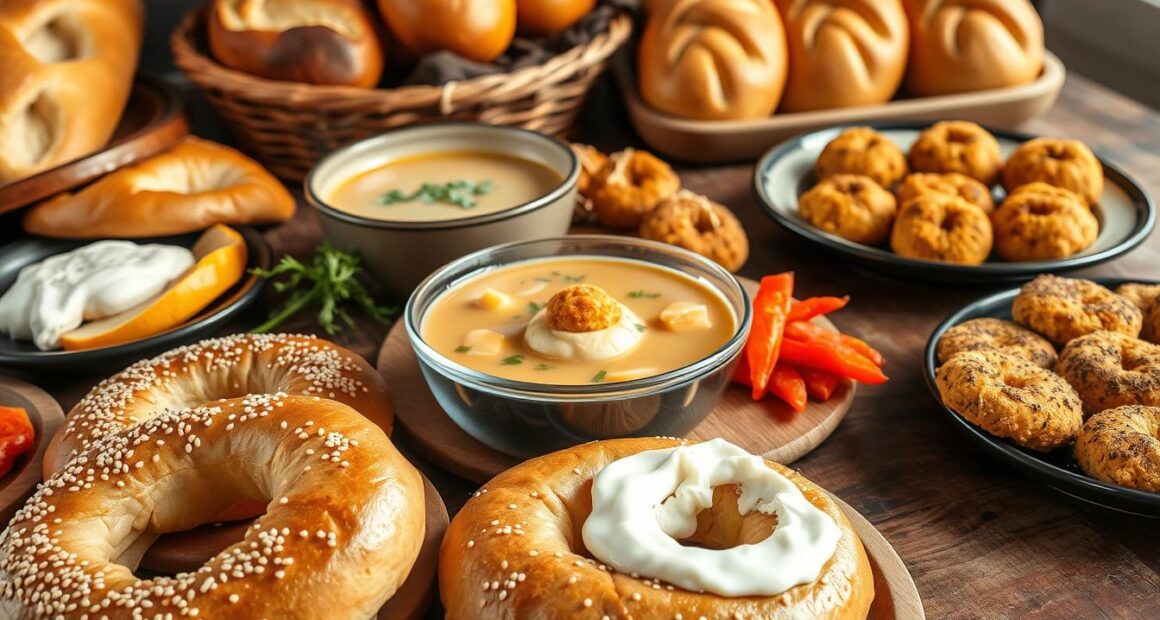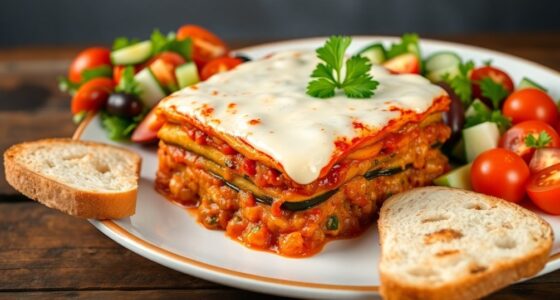Jewish cuisine is more than just food; it is a celebration of tradition, family, and heritage. Each dish carries the weight of history, evoking memories of loved ones gathering around the table to share stories and laughter. The aroma of freshly baked challah or the warmth of matzo ball soup simmering on the stove brings back the essence of familial bonds and cultural roots. In exploring these traditional Jewish foods, you discover not only unique flavors but also the stories that connect generations.
From festive holiday dishes filled with significance to comforting meals that warm the heart, Jewish cuisine beautifully reflects a blend of cultural influences that have shaped it over centuries. Whether it’s the crispy delight of latkes during Hanukkah or the savory satisfaction of brisket, each of these ten must-try dishes invites you to partake in a culinary journey that honors a rich heritage while tantalizing your taste buds.
Join us as we delve into the delectable world of Jewish cuisine, celebrating the flavors and traditions that stand the test of time.
Key Takeaways
- Jewish cuisine symbolizes tradition and cultural heritage.
- Classic dishes like matzo ball soup and brisket resonate with family gatherings.
- Latkes and sufganiyot highlight the celebration of holidays, especially Hanukkah.
- Jewish food reflects diverse influences, particularly from Middle Eastern traditions.
- Each dish tells a story, linking generations through shared meals.
Introduction to Jewish Cuisine
Jewish cuisine offers a captivating exploration of food culture marked by rich traditions and vibrant flavors. Rooted in centuries-old customs, this culinary art reflects the spiritual and social tapestry of Jewish people across the globe. From sacred ceremonies to daily meals, food plays a vital role in Jewish life, punctuated by the observance of kosher recipes that adhere to dietary restrictions shaped by both culture and religion.
The Importance of Tradition
Tradition is central to jewish cuisine, influencing both ingredients and cooking methods. Specific meals prepare for Jewish holidays carry deep symbolic meaning, representing historical narratives and religious significance. For instance, dishes like matzah during Passover and challah on Shabbat evoke memories of ancient practices while reinforcing a collective identity. Families often gather to share these culinary experiences, fostering a strong sense of community.
Cultural Influences on Food
The history of the Jewish diaspora has introduced a myriad of cultural influences that enrich jewish cuisine. Over time, Ashkenazi, Sephardi, and Mizrahi communities have developed distinctive culinary styles, integrating local ingredients and techniques from various geographies. From Eastern European comfort foods to vibrant Middle Eastern dishes, the adaptation of flavors uniquely illustrates the versatility and resilience of Jewish cooking traditions. The evolution of these culinary practices exemplifies how perspectives intertwine, creating an innovative blend of culture and taste.
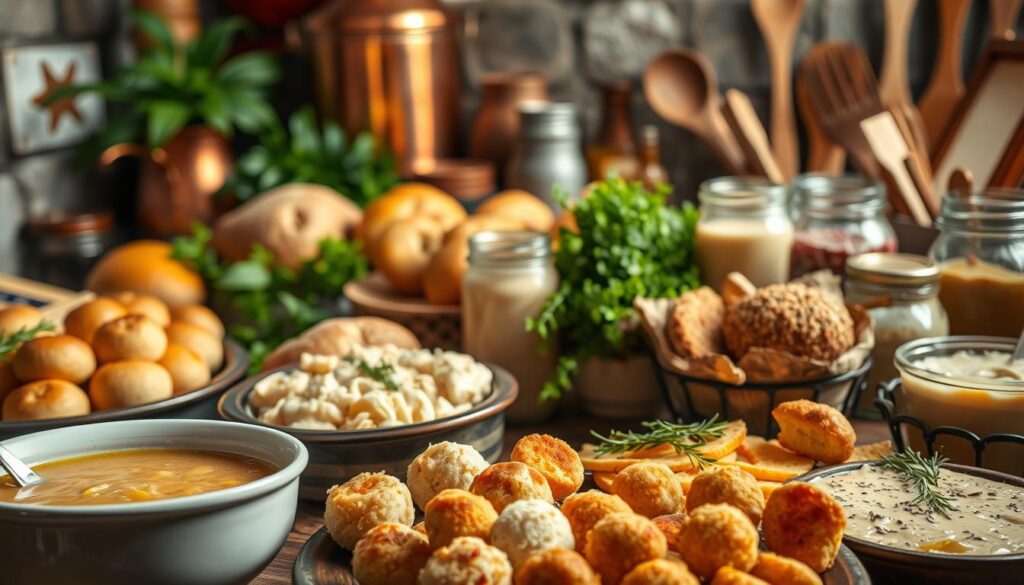
Matzo Ball Soup: A Comfort Classic
Matzo ball soup holds a cherished place in Jewish cuisine, often referred to as a quintessential comfort food. This traditional Jewish food is especially beloved for its warm, nourishing qualities, making it a staple during Passover and family gatherings. Known for its exquisite flavor and comforting nature, this soup is a timeless dish that many have come to adore.
Ingredients You’ll Need
Creating the perfect matzo ball soup starts with a few fundamental ingredients. Here’s what you’ll need:
- 4 cups of chicken broth
- 1 cup of matzo meal
- 3 large eggs
- 1/4 cup of schmaltz or olive oil
- 1/2 cup of seltzer, for fluffiness
- Salt and pepper to taste
Tips for the Perfect Matzo Balls
To achieve fluffy matzo balls that float delightfully in your soup, consider the following tips:
- Allow the matzo ball mixture to chill for at least 30 minutes before shaping.
- Handle the mixture gently to avoid creating dense balls; avoid pressing too hard.
- For added fluffiness, add 1 teaspoon of baking powder per cup of matzo meal.
- Cook your matzo balls in broth for about 30-40 minutes, ensuring they reach the right texture.
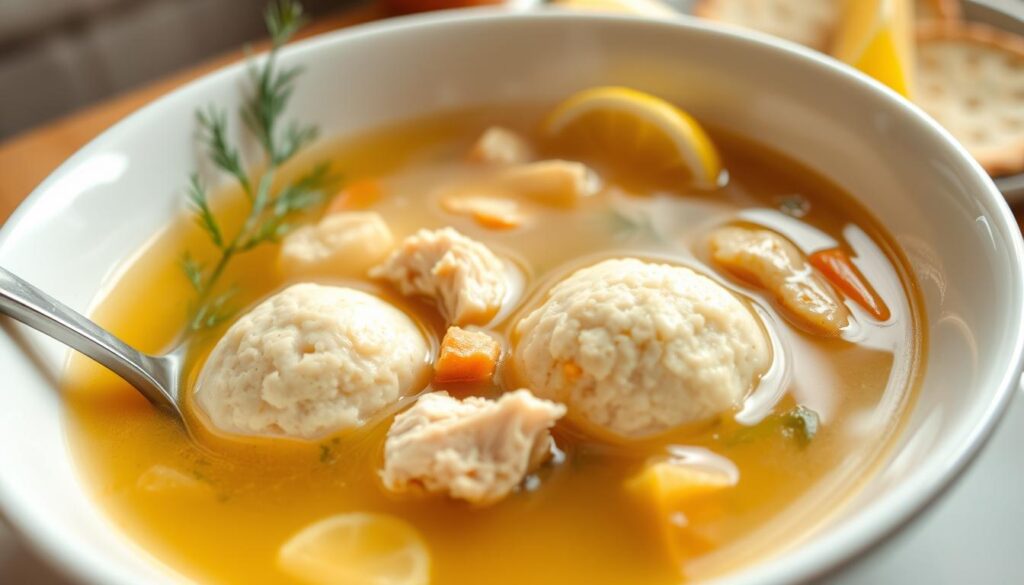
Challah: The Sweet, Braided Bread
Challah is a cherished component of Jewish food culture, widely recognized for its sweet, rich flavor and braided appearance. This unique bread carries significant meaning, making it an essential part of ceremonial occasions such as Shabbat and major Jewish holidays. The act of separating a portion of dough, known as a tithe, is traditionally observed when baking this beloved bread, marking its importance in holiday dishes and everyday meals alike.
The Significance of Challah
Historically, the practice of braiding challah is thought to have originated in the 15th century in Austria and Southern Germany. Traditional Ashkenazi recipes typically require a wealth of eggs, fine white flour, sugar, yeast, oil, and salt, contributing to its delightful texture and flavor. Some customs dictate that if a bread contains excessive sugar, it might be deemed as cake, shifting how one blesses it before meals. In Ashkenazi practice, a six-strand braid symbolizes the twelve loaves of showbread once offered in the Temple. Along with its braided beauty, beginning Sabbath meals with two complete loaves commemorates the double portion of manna provided before the Sabbath.
How to Enjoy Challah
Challah can be savored in various ways, from being enjoyed plain with a drizzle of honey to being transformed into delectable dishes. Many find joy in preparing challah French toast or rich bread pudding, adding personal touches like chocolate chips or raisins to elevate this classic treat. During Rosh Hashanah, it may even be shaped into a circular loaf, symbolizing the eternal cycle of life. As you partake in these traditions, you honor the significance of challah within Jewish food culture and create lasting memories around the table.
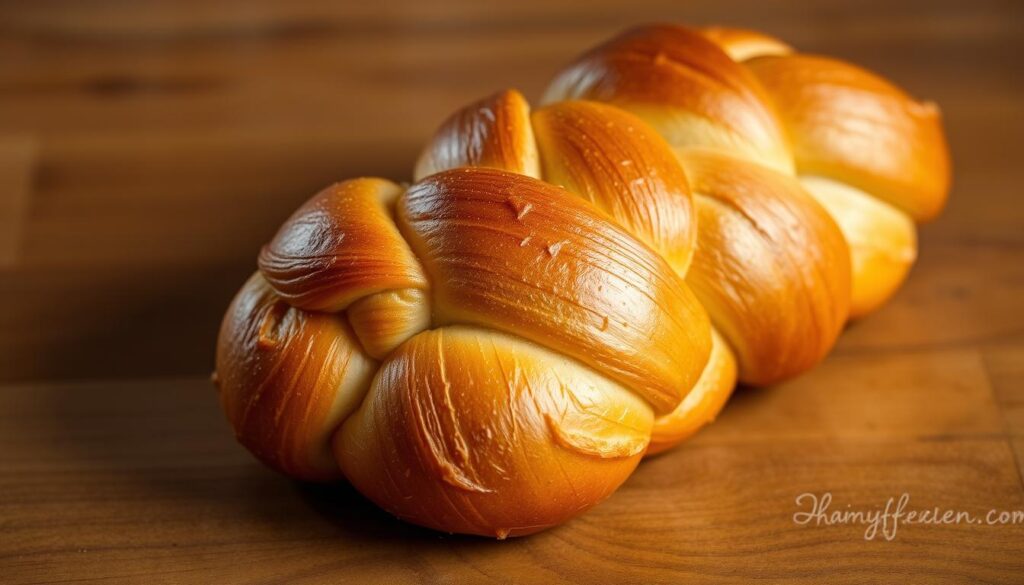
Brisket: A Tender Family Favorite
Brisket, a classic in traditional Jewish food, has garnered a reputation as a cherished centerpiece during family gatherings and holiday dishes. This flavorful cut of meat, known for its tenderness when slow-cooked, holds a special place in Jewish deli dishes, particularly during significant occasions like Rosh Hashanah and Passover. Preparing brisket is an art, and with the right approach, you can create a dish that will impress your guests and satisfy your family.
Preparing the Perfect Brisket
To begin, gather these essential ingredients:
- 4-5 pounds of brisket (2nd cut)
- 8-10 large garlic cloves
- 2 medium red onions
- 2 medium carrots
- 2 ribs of celery
- 2 bay leaves (bouquet garni)
- 6 parsley stems
- 3 thyme sprigs
- 3 rosemary sprigs (or 1 teaspoon dried rosemary)
- 1 quart of beef stock
- 1 cup of ketchup
- ¼ cup of coconut or brown sugar
- Olive oil for searing
Start by preheating your oven to 300°F. Lightly coat the bottom of a Dutch oven with olive oil. Sear the brisket for approximately 5 minutes on each side until browned. Remove the brisket and sauté the vegetables for about 10 minutes, then add the garlic for another minute. Return the brisket to the pot, add the beef stock, ketchup, and sugar, followed by the bouquet garni.
Cover the Dutch oven and braise the brisket for about 3 ½ to 4 hours. Let it rest for 20 minutes before slicing, allowing the juices to redistribute throughout the meat. This method guarantees a melt-in-your-mouth texture that is synonymous with holiday dishes and special gatherings.
Serving Suggestions for Brisket
Brisket pairs beautifully with a variety of sides, enhancing its rich, savory flavor. Try these popular accompaniments:
| Side Dish | Description |
|---|---|
| Kugel | A sweet or savory noodle pudding that complements the brisket’s richness. |
| Roasted Vegetables | Seasonal vegetables cooked to perfection for a healthy balance. |
| Potato Salad | A creamy dish that adds a refreshing contrast to the meat. |
| Pickles | Provides a tangy crunch that enhances the overall meal experience. |
This tender cut continues to be a favorite in Jewish culinary tradition, seamlessly transitioning from simple family meals to elegant celebrations. The love and dedication put into preparing brisket truly shines through in each bite, making it an essential part of holiday feasts and gatherings.
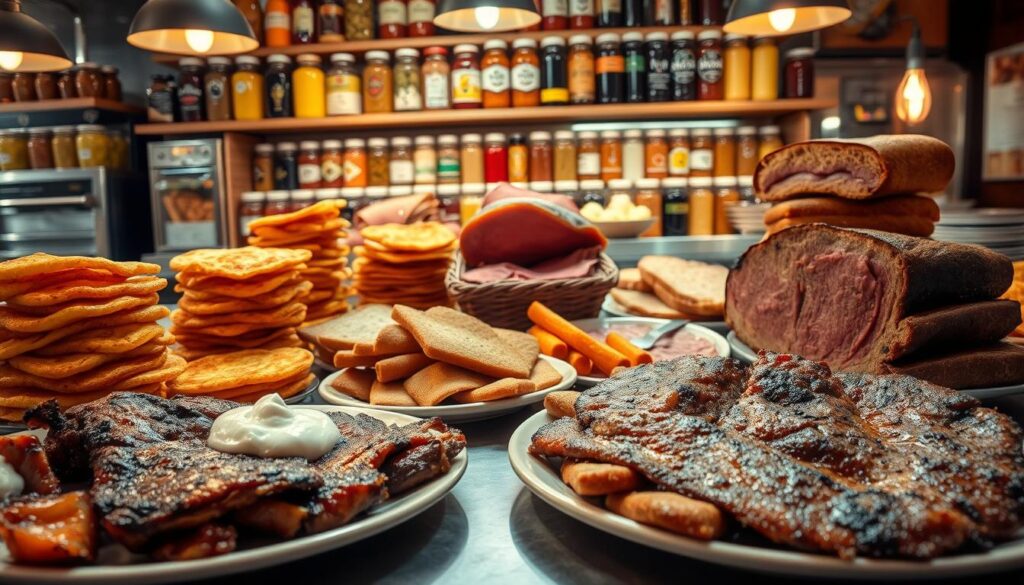
Latkes: Crispy Potato Pancakes
Latkes, the quintessential potato pancakes, are a beloved dish during Hanukkah but enjoyed year-round for their crispy goodness. These traditional fried items symbolize the miracle of oil, connecting you to Jewish heritage while indulging in comfort food. Preparing latkes is a delightful process that showcases the flavor of simple ingredients while allowing for personalization with various toppings.
Ingredients for Delicious Latkes
To create your perfect batch of latkes, gather the following ingredients:
- 2 1/2 pounds of potatoes
- 3/4 cup of matzo meal or bread crumbs
- 2 large eggs
- 1 tablespoon of potato starch (or more if needed)
- 1 1/4 teaspoons of salt (or to taste)
- 1/2 teaspoon of pepper
- About 1 1/2 cups of oil for frying (olive oil or butter for a richer flavor)
- Optional: 1/4 cup of schmaltz for enhanced taste
This basic recipe yields approximately 24 servings, making it perfect for gatherings or festive occasions.
Flavors and Toppings to Try
While traditional latkes are commonly served with applesauce or sour cream, you can elevate them with gourmet toppings for a unique twist. Consider pairing them with:
- Smoked salmon for a luxurious brunch option
- Poached eggs to add a protein-rich element
- Herbed cream cheese or flavored sour cream for a savory delight
Explore these creative toppings to transform your latkes from simple potato pancakes into a culinary experience. Whether celebrating with classic Hanukkah recipes or enjoying them on a casual Sunday, latkes remain a cherished dish that brings joy to every table.

Kugel: A Versatile Casserole Dish
Kugel stands out as a beloved dish in traditional Jewish food, showcasing its versatility and cultural significance. Originating from Germany more than eight centuries ago, kugel offers a unique combination of flavors, appealing to various tastes. You can prepare it sweet or savory, making kugel a staple during cherished holiday recipes and family gatherings.
Sweet vs. Savory Kugel
Sweet kugel often features ingredients like sugar, cinnamon, and raisins, perfect for serving on special occasions like Yom Kippur and Shavuot. This sweet delight commonly graces holiday tables and is a hit among those with a penchant for desserts. On the other hand, savory kugel includes onions and spices, appealing to those who prefer less sweetness.
Traditional Recipes to Explore
Exploring various kugel recipes can provide insightful culinary experiences. You might discover noodle kugel, a key component of Ashkenazi Jewish tradition, served during Shabbat and other holidays. This baked pudding or casserole often incorporates egg noodles and a variety of ingredients, with traditional recipes passing down through generations.
| Nutrition Facts | Per Serving |
|---|---|
| Calories | 489 kcal |
| Carbohydrates | 81 g |
| Protein | 15 g |
| Fat | 12 g |
| Saturated Fat | 6 g |
| Monounsaturated Fat | 3 g |
| Trans Fat | 0.04 g |
| Cholesterol | 150 mg |
| Sodium | 371 mg |
| Fiber | 2 g |
| Sugar | 43 g |
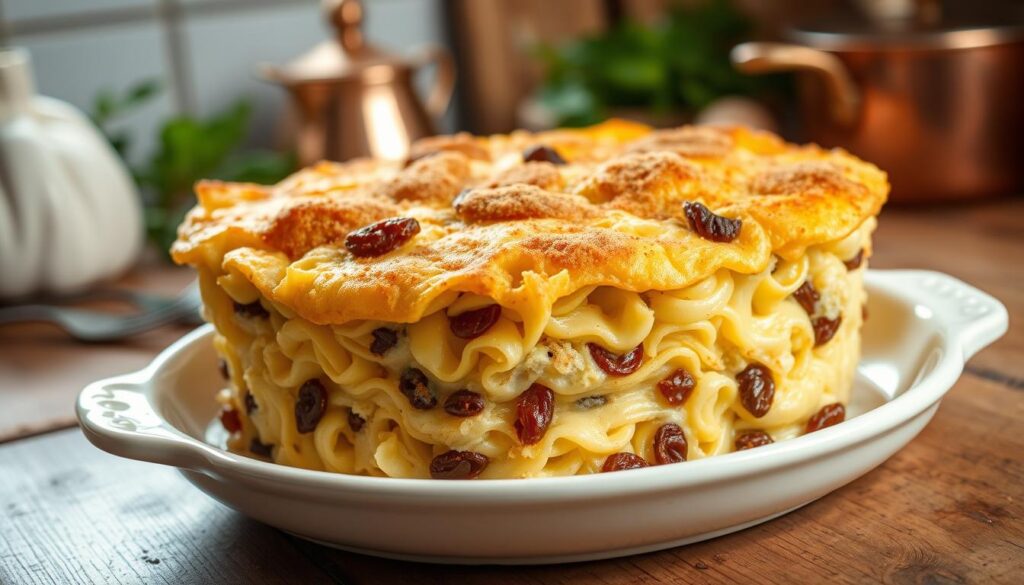
Falafel: A Middle Eastern Must-Have
Falafel stands out as a beloved dish within Israeli cuisine, offering a flavorful combination of ingredients and a rich history. Originating in Egypt, falafel has transformed into a staple that showcases how traditional Jewish food has been influenced by Middle Eastern flavors. Making your own falafel allows you to experiment with various spices and herbs, ensuring each bite is uniquely yours.
Making Your Own Falafel
Creating falafel at home is a rewarding experience. Begin by soaking dried chickpeas overnight. This approach enhances texture and flavor. A typical recipe requires about 3 cups of soaked chickpeas. To add vibrancy, include fresh herbs like parsley and cilantro, about a packed cup of each. The mixture should feel like wet sand when squeezed, holding together yet crumbly. For extra fluffiness, consider adding baking powder and a bit of flour to bind the ingredients. Cooking usually takes about 2 to 3 minutes per batch in oil heated to roughly 340°F, delivering a crispy exterior and delightful flavor.
Pairing Falafel with Other Foods
Falafel shines brightest when paired with complementary sides and toppings. A classic choice involves placing these delectable balls inside pita bread, accompanied by Israeli salad, fried eggplant, or pickled vegetables. The versatile nature of falafel means it can also be enjoyed with sauces like tahini or garlic sauce. This combination not only enhances the flavor but also pays tribute to falafel’s roots in traditional Jewish food.
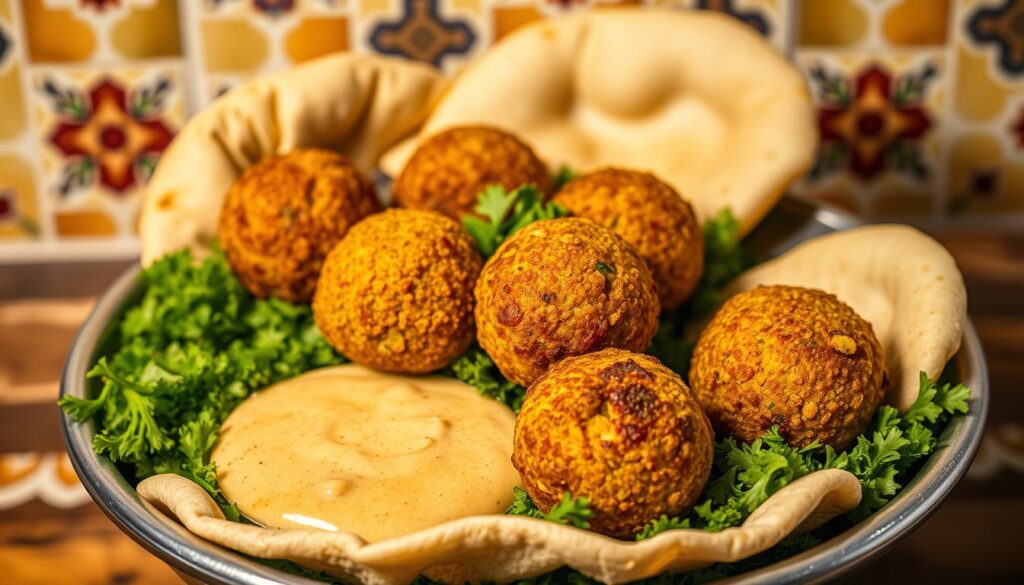
| Nutritional Value (Per Serving) | Amount |
|---|---|
| Calories | 572 kcal |
| Carbohydrates | 71 g |
| Protein | 24 g |
| Fat | 24 g |
| Saturated Fat | 8 g |
| Sodium | 625 mg |
| Potassium | 1149 mg |
| Fiber | 20 g |
| Sugar | 11 g |
| Vitamin A | 1135 IU |
| Vitamin C | 21 mg |
| Calcium | 198 mg |
| Iron | 10 mg |
Shakshuka: A Flavorful Breakfast Delight
Shakshuka has gained popularity as a delicious breakfast dish that highlights the rich flavors of Israeli cuisine. This delightful meal features eggs poached in a smoky and spicy tomato sauce, offering a fantastic start to your day. Making shakshuka at home is not only simple but also a mindful way to connect with Middle Eastern culinary traditions.
Preparing Shakshuka at Home
To create a perfect shakshuka, gather the following ingredients:
- 2 tablespoons of extra-virgin olive oil
- 2 small yellow onions, finely diced
- 3 cloves of garlic, minced
- 1 bell pepper, chopped
- 1 can (28 oz) of whole peeled tomatoes
- ¾ teaspoon of smoked paprika
- 1 teaspoon of ground cumin
- 1 teaspoon of ground coriander
- ¼ teaspoon of crushed red pepper flakes
- 6 large eggs
- Fresh herbs, such as parsley or cilantro, for garnish
- Salt and pepper to taste
The preparation time for shakshuka is about 15 minutes, while cooking takes an additional 5 to 8 minutes, depending on your yolk preference. To start, heat olive oil in a cast iron pan, add the diced onions, garlic, and bell pepper, and sauté until soft. Then, incorporate the spices and tomatoes, letting the mixture simmer. Gently crack the eggs into the sauce and cover the pan, allowing them to poach. Completing this dish in under 30 minutes makes it an ideal choice for those quick mornings.
Ideal Bread Pairings for Shakshuka
Serving shakshuka with the right bread elevates your breakfast experience. Traditional pairings include:
- Warm pita bread, perfect for scooping up the sauce
- Crusty sourdough, adding a delightful crunch
- Challah, providing a slightly sweet balance to the savory flavors
The choice of bread complements the hearty shakshuka, making it a satisfying and delightful part of your Israeli cuisine repertoire. Enjoying this dish on a leisurely weekend morning or as a wholesome breakfast recipe ensures you start your day on a flavorful note.

Tzimmes: A Sweet Stew
Tzimmes is a delightful fusion of sweet root vegetables and dried fruits, making it a cherished dish in traditional Jewish food. This comforting stew often graces holiday tables, delighting guests with its rich flavors and warm colors. It holds particular significance during Rosh Hashanah, where it symbolizes sweetness and abundance for the upcoming year.
Ingredients That Make Tzimmes Special
To prepare a classic tzimmes, gather the following ingredients:
| Ingredient | Quantity |
|---|---|
| Orange yams | 1.5 pounds |
| White sweet potatoes | 1.5 pounds |
| Carrots | 1 pound (approximately 8 carrots) |
| Prunes | 1 cup |
| Honey | 1/4 cup |
| Ground cinnamon | 1 teaspoon |
How to Serve Tzimmes
Serving tzimmes is a simple yet rewarding experience. This dish pairs beautifully with hearty meals, often served alongside braised brisket or roasted chicken. For a festive touch, consider garnishing with chopped parsley before presenting it to your guests. Tzimmes can be made ahead of time, allowing the flavors to meld further, and it stores well, whether in the refrigerator or freezer.
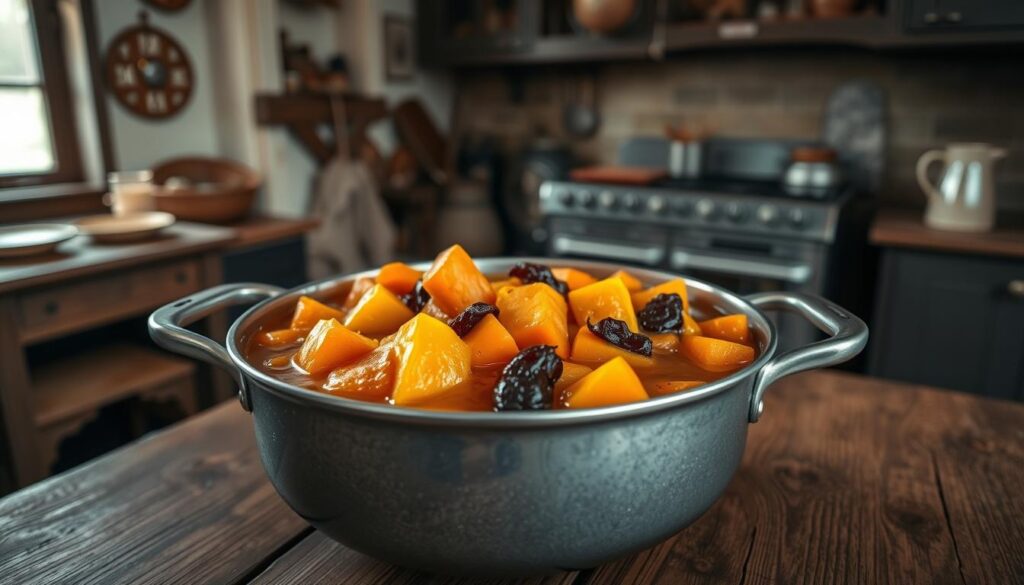
Blintzes: Delicious Crepes with a Twist
Blintzes represent a delightful aspect of traditional Jewish food, showcasing thin crepes filled with flavorful fillings. These versatile dishes can feature sweet cheese or a savory mix, making them perfect for various occasions. Traditionally, blintzes are a staple during Shavuot, enhancing festive meals with their unique taste and texture.
Variations of Blintzes
You can explore numerous variations of blintzes, all of which reflect the creativity found in kosher recipes. The popular choice includes sweet cheese filling made from a combination of ricotta and cream cheese, sweetened with vanilla and sugar. For those who prefer savory options, fillings such as seasoned potatoes or sautéed mushrooms provide an enticing alternative. The beauty of blintzes lies in their ability to adapt to personal preferences.
Serving and Enjoying Blintzes
Serving blintzes can be a fun and interactive experience. Typically enjoyed warm, they are often topped with fruit sauces, which enhance their flavor profile. Common choices include blueberry, strawberry, or even peach sauces that add vibrancy to each bite. For an authentic experience, serve with a side of sour cream for a contrasting coolness. Given their delightful taste, blintzes are perfect for any meal—whether breakfast, brunch, or dessert.
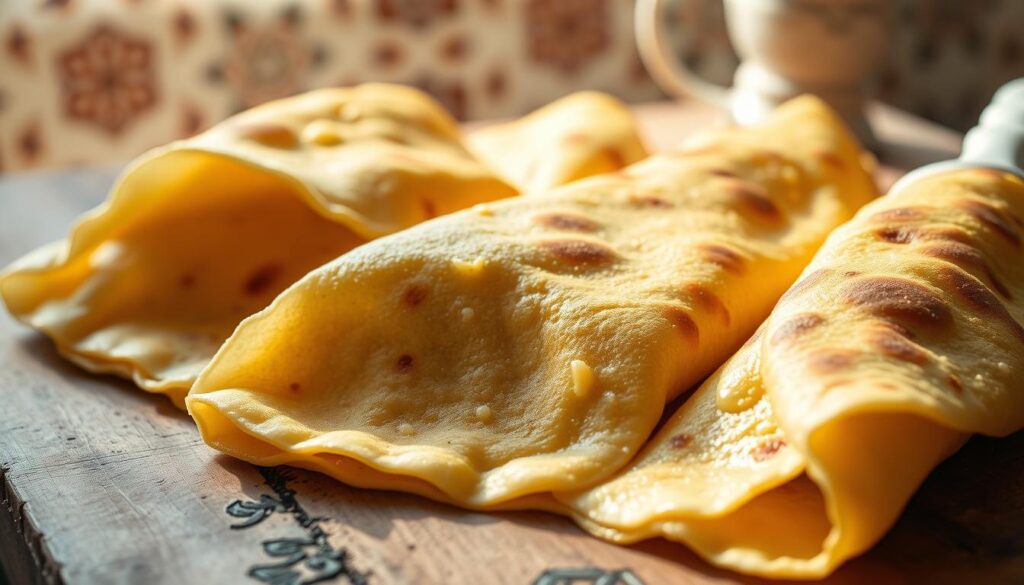
Rugelach: Irresistible Pastry Treats
Rugelach stands out as a delightful pastry that brings joy to any occasion. Originating from Eastern Europe, this dessert features a rich, buttery dough rolled with delicious fillings. Popular in Jewish deli dishes and home kitchens alike, these treats offer a perfect blend of flavors and textures.
Filling Options for Rugelach
Finding the right filling can elevate rugelach from a simple pastry to a cherished family favorite. Here are some enticing options you might consider:
- Chocolate Raspberry: A combination of raspberry preserves and dark chocolate lends a fruity and rich flavor.
- Cinnamon Walnut: Mix chopped walnuts or pecans with brown sugar and cinnamon for a nutty twist.
- Apricot Almond: Use apricot preserves paired with sliced almonds for a fruity and nutty experience.
- Apple Cinnamon: Incorporate finely chopped apples with cinnamon and sugar for a nostalgic taste.
Baking Tips for the Best Rugelach
To create the perfect rugelach, keep these baking tips in mind:
- Allow the dough to chill for about 1 hour for optimum texture.
- Roll out the dough evenly, ensuring each piece is cut to approximately 1 inch before baking.
- Bake at 350°F (180°C) for 20 to 25 minutes until subtly golden.
- Use an egg wash to achieve a shiny finish and enhance the color of the pastries.
With a total yield of 48 cookies per batch, rugelach serves as an excellent addition to your pastry recipes. Enjoy sharing these treats during holidays or special gatherings, creating sweet memories with every bite.

Conclusion: Embracing Jewish Culinary Heritage
As you delve into the world of Jewish cuisine, you uncover the rich tapestry of flavors and historical significance that comes with each dish. From the comforting warmth of matzo ball soup to the delightful sweetness of rugelach, these kosher recipes are more than just meals; they are a celebration of culture. Engaging with traditional Jewish food allows you to explore its cultural influences, enhancing your appreciation for authentic flavors.
Your Journey Through Jewish Cuisine
Every family recipe carries a story, a connection to heritage that resonates through generations. Preparing classic foods for special occasions, such as the latkes and sufganiyot for Hanukkah, not only honors traditions but also cultivates cherished memories. The Jewish diaspora has intricately woven diverse culinary practices across regions, showcasing a vast array of dishes that have evolved while staying true to their roots.
Encouragement to Explore and Experiment
Don’t hesitate to experiment in your kitchen! Mixing modern ingredients with traditional Jewish flavors can rejuvenate classic recipes while keeping them relevant for today’s palate. Whether you’re perfecting a Shabbat meal or trying your hand at making gefilte fish, explore the endless possibilities within Jewish cuisine. By engaging with these recipes, you can carry forward a vital connection to your cultural heritage and create new traditions of your own.
